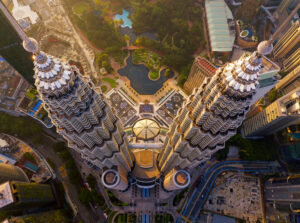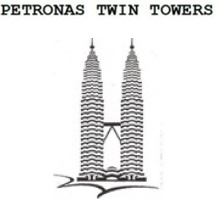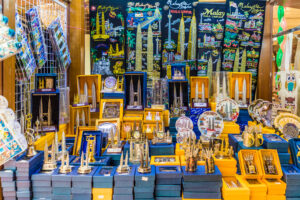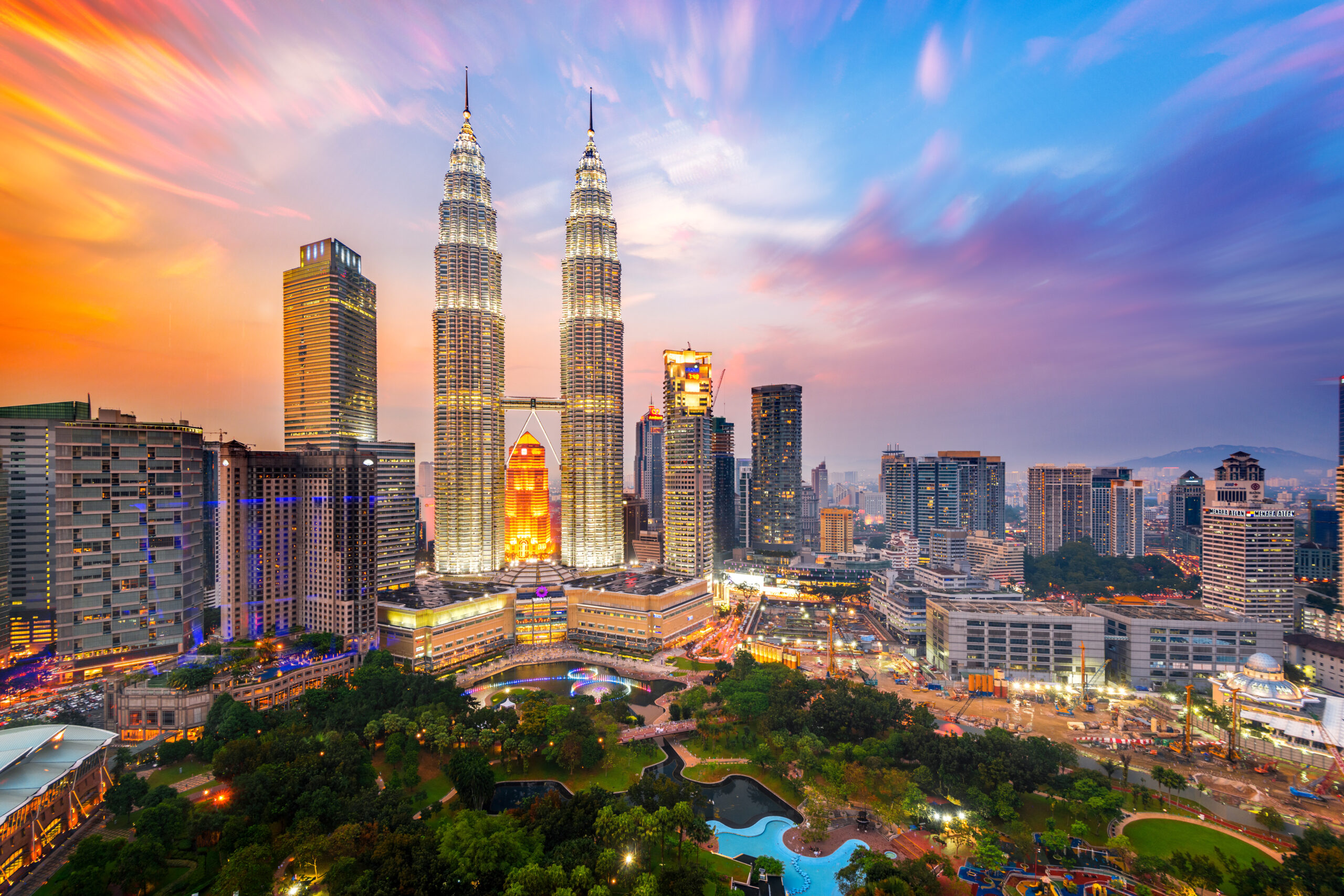The Petronas Twin Towers, located in Kuala Lumpur, Malaysia, are one of the most recognizable landmarks in the world and a significant tourist attraction. Owned by Petroliam Nasional Company (Petronas), the state-owned oil and gas company, construction was completed in 1998, taking 6 years and costing RM 6 billion (USD 1.6 billion). The Argentine-American architect César Pelli designed the structures, blending modern architectural techniques with Islamic art motifs, reflecting Malaysia’s cultural heritage. The Towers house offices, an observation deck, a Skybridge, and the Suria KLCC shopping mall, making them a central hub for both business and tourism in Malaysia.
Reaching for the Skies: Architectural Marvels and Global Milestones

At 452 meters, the Towers were the tallest buildings in the world until 2004. As of today, they are still the tallest twin towers in the world, symbolizing Malaysia’s rapid development and modernity. In 2024, the Towers marked its 25th anniversary.
Standing as an architectural marvel and iconic landmark, they frequently feature as iconic city backdrops in tourists’ holiday photos. The Towers have become a powerful brand symbol for Malaysia and Petronas and a real magnet for tourists. This result was achieved with the strategic use of various IP rights.
Brand Power: Protecting the Towers’ Legacy Through IP
The name “Petronas Twin Towers” and its figurative depictions are registered trademarks owned by the Petroliam Nasional Company. These trademark protections facilitate controlled usage in marketing and promotional activities, maintaining the prestige and recognition associated with the name and imagery of the Towers. The trademarks are applicable across 10 different classes of goods and services under the Nice Classification, maximizing merchandising options, and facilitating commercial licensing opportunities. In particular, its name and figurative imagery can be licensed for various products and services, generating additional revenue streams while ensuring that the IP is leveraged and managed effectively.

The unique and innovative design of the Towers (notably the eight-pointed star-shaped floor plan derived from Islamic geometry representing unity, harmony, stability, and rationality, and with the Skybridge connecting the two Towers), created by architect César Pelli, is protected under Malaysian Copyright Act 1987 (CA 1987). The Towers, a modernist take on the traditional Islamic minaret, also represent a seismic shift in the world of architecture – being the first structures outside the United States to claim the title of the world’s tallest buildings.
Copyright protection ensures that the specific architectural features cannot be replicated without permission, preserving the originality and unicity of the structure. However, copyright is also crucial to protect other key aspects of the Petronas Twin Towers’ business, namely, their website, online shop content and images, social media content and posts, brochures, staff uniforms, promotional materials, and merchandise designs, to name a few.
Cultural Vibrancy and Global Influence

From time to time, the Towers organize festivals and cultural events such as the Jabatan Kesenian & Kebudayaan Negara (JKKN) Colors of Malaysia 2024 and Lunar New Year celebrations with exhibits and traditional dance or music performances. Copyright and related rights are crucial tools to protect and promote such events, ensuring that authors and performers are duly recognized and remunerated and adequate returns are secured on the organizers’ investments to compensate for their significant human and financial efforts.
In conclusion, the robust protection of IP rights associated with the Petronas Twin Towers plays a critical role in distinguishing them in the global market. By safeguarding the Towers’ design, name, and associated branding, these rights ensure the Towers remain unique and instantly recognizable, reinforcing Malaysia’s image on the world stage as a favored tourist destination. As a result, the Towers have a profound economic and social impact on Malaysia.
The Towers attract millions of international visitors annually, boosting the local economy through spending on hotels, dining, and other tourism-related activities, spurring the development of the surrounding Kuala Lumpur City Centre, creating jobs, and driving economic growth.
In addition, the Towers have enhanced Malaysia’s attractiveness as a destination for world- class events and conferences. As of September 2024, the Kuala Lumpur Convention Centre, Asia’s first AIPC Gold Standard Venue, has hosted 20,678 events, welcomed 28.8 million visitors and delegates, and contributed RM11.4 billion in economic impact.
Business Functions and Sustainability
The Towers house the headquarters of the Petroliam Nasional Company and numerous multinational corporations and businesses, providing premium office spaces. Built over a former racetrack, the Petronas Towers also include shopping and entertainment facilities, a petroleum museum, and a concert hall home to the Malaysian Philharmonic Orchestra. This concentration of businesses stimulates economic growth, generates job opportunities, and bolsters Kuala Lumpur’s reputation as a key business hub of the ASEAN region.
In the area of sustainability, the Towers incorporate several energy-efficient features, such as the addition of 590,000 ft² of lamination glass over the surface of the skyscraper to keep out heat and UV rays, the switch to LED lighting in common areas and mechanical floor, and the harvesting of rainwater for landscaping and other non-potable uses. The Towers proudly achieved a Gold GBI rating for green building certification in 2023.
Overall, the Petronas Twin Towers are more than just an architectural marvel; they symbolize Malaysia’s growth and aspirations. The effective use of IP rights has been crucial in protecting the Towers’ unique features, enhancing their market position, providing both competitive advantage and long-term value, and ensuring their continued impact on Malaysia’s economy and society.






